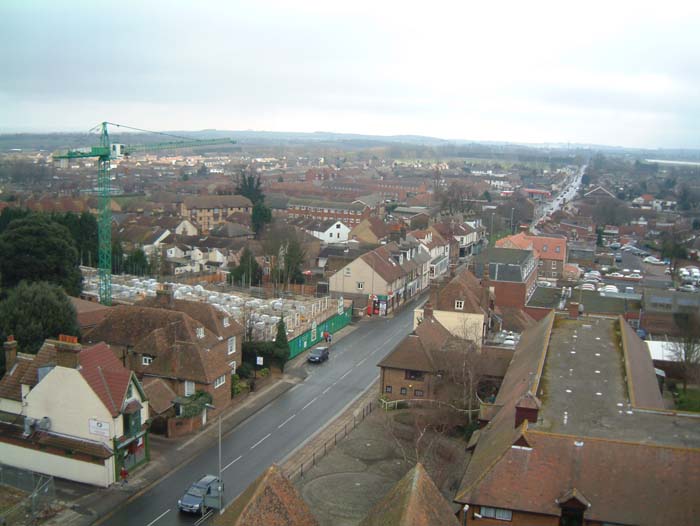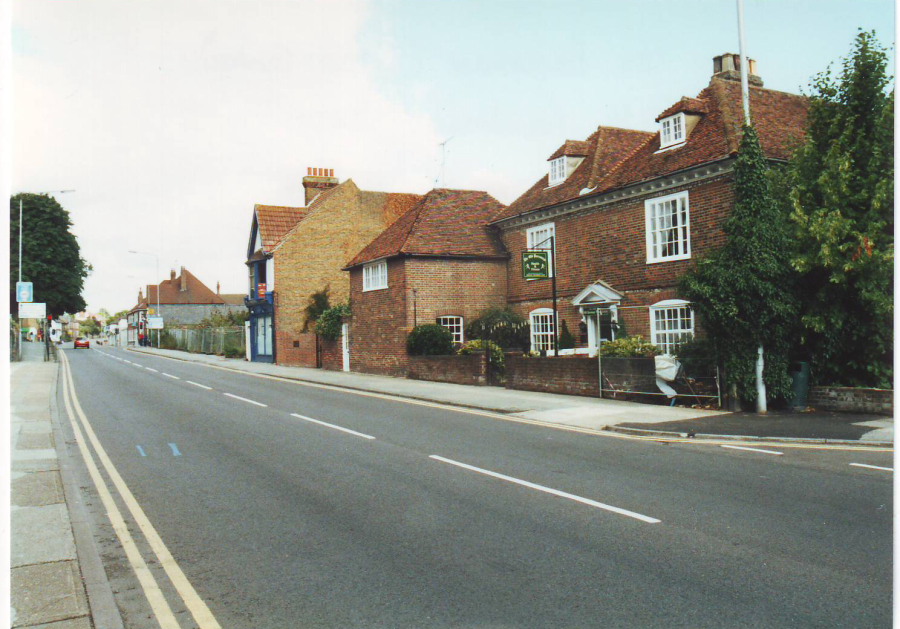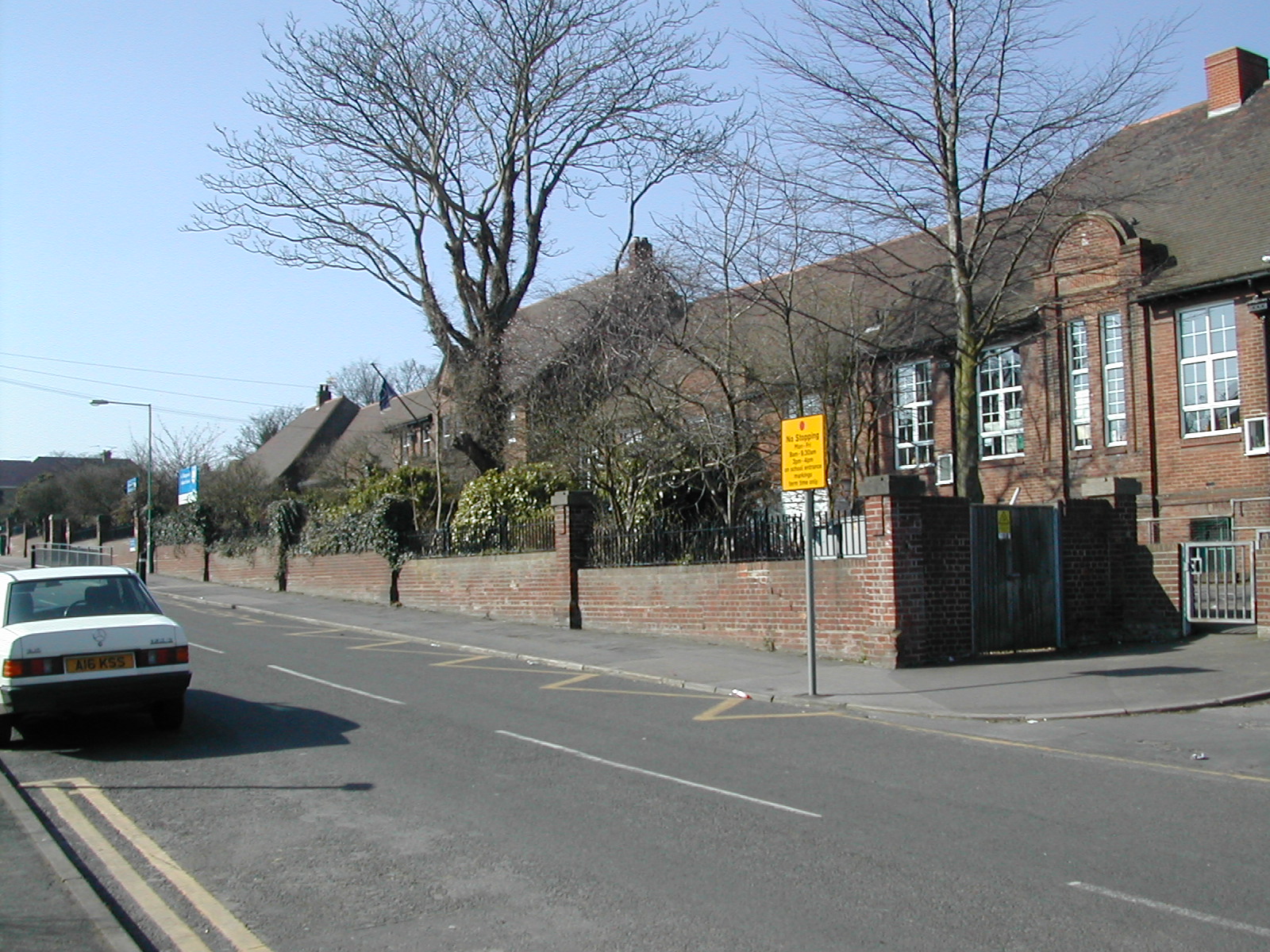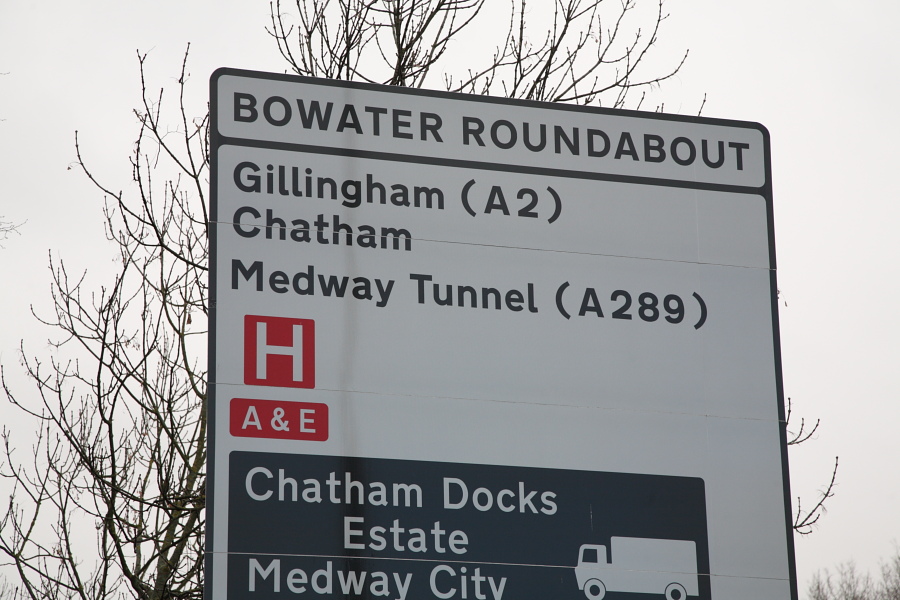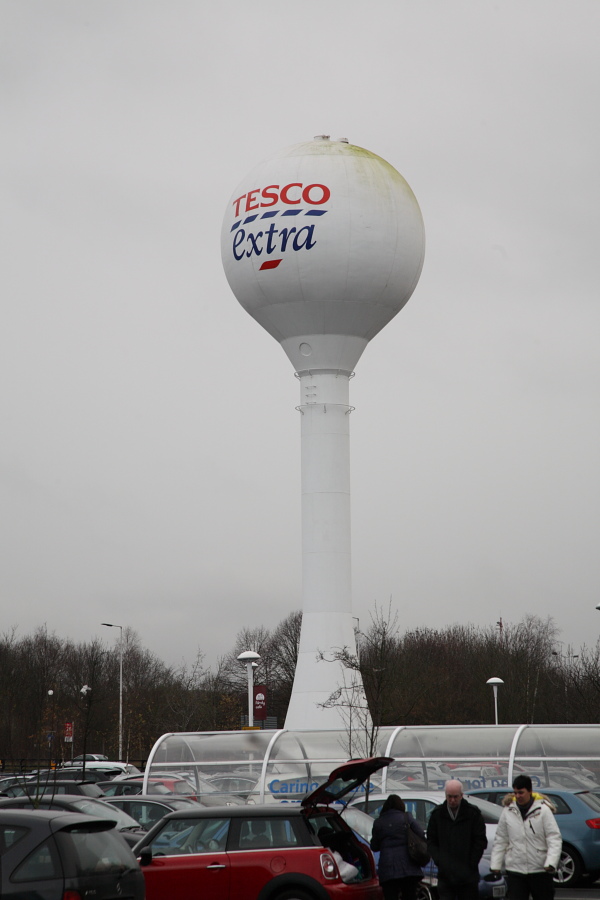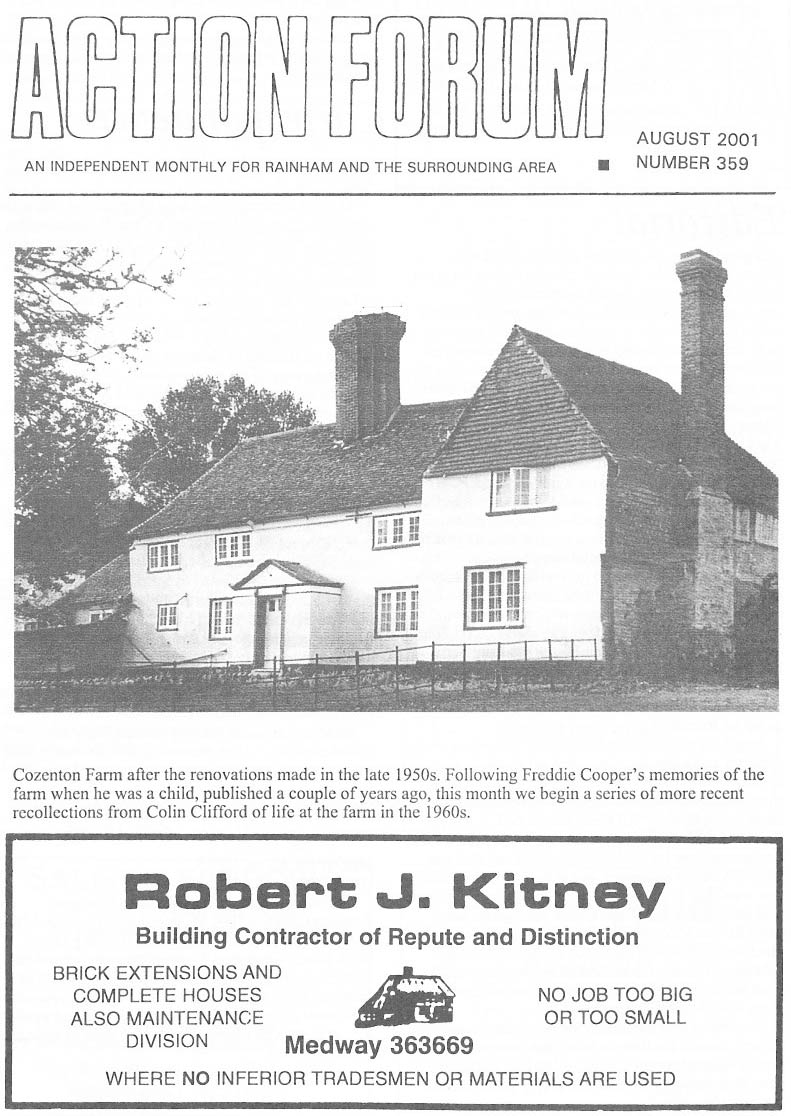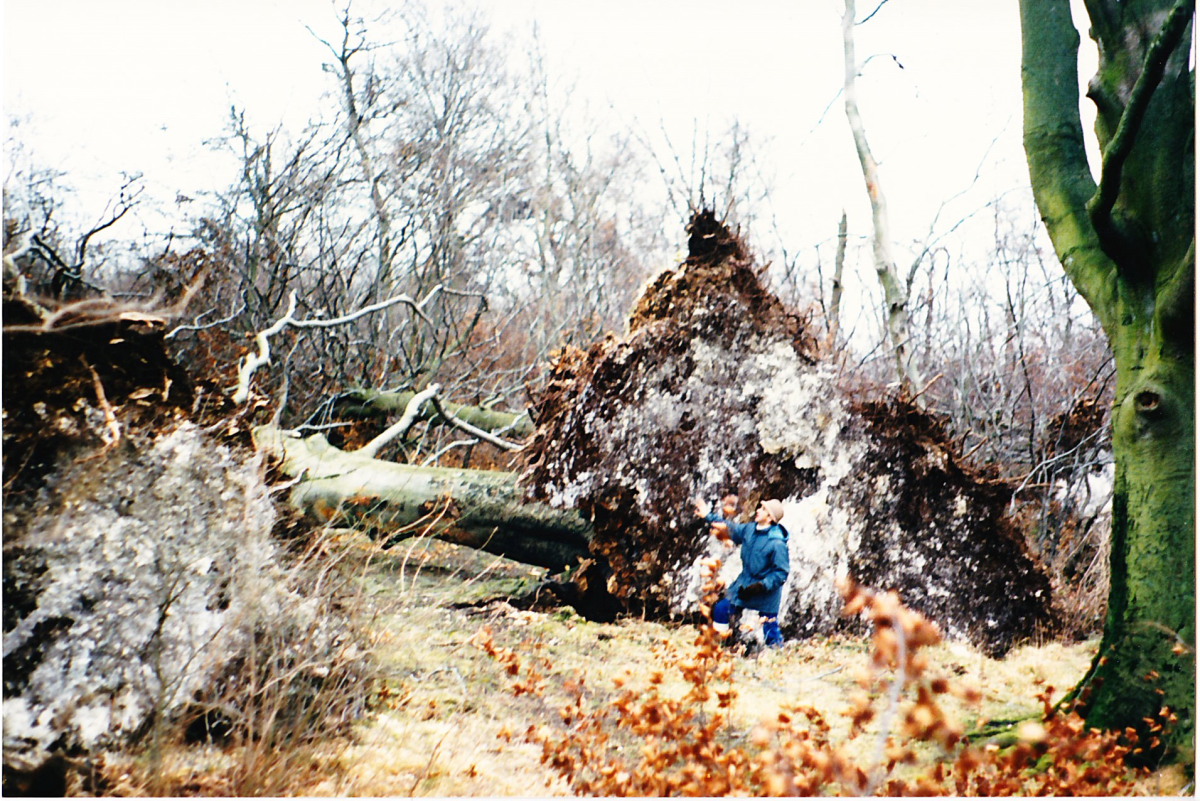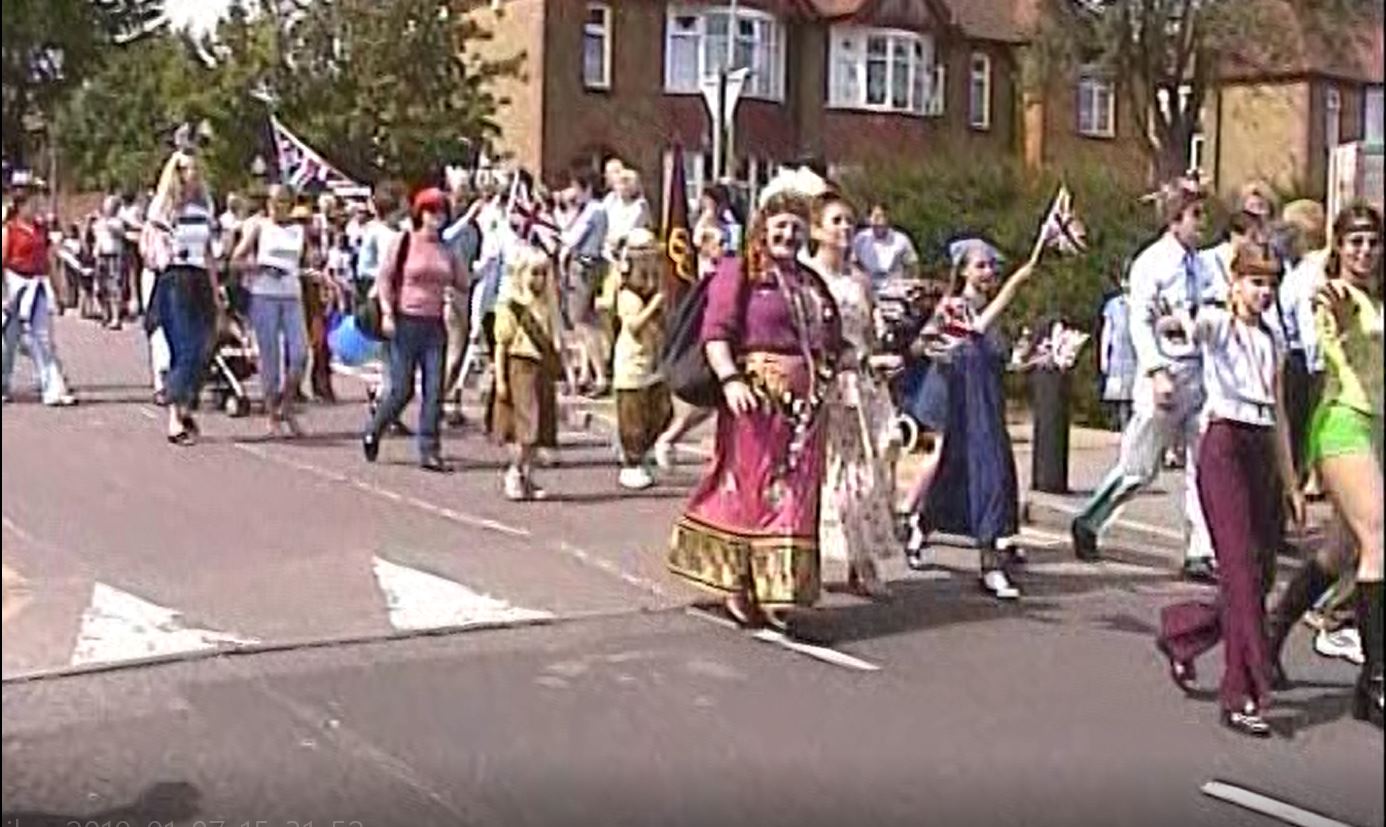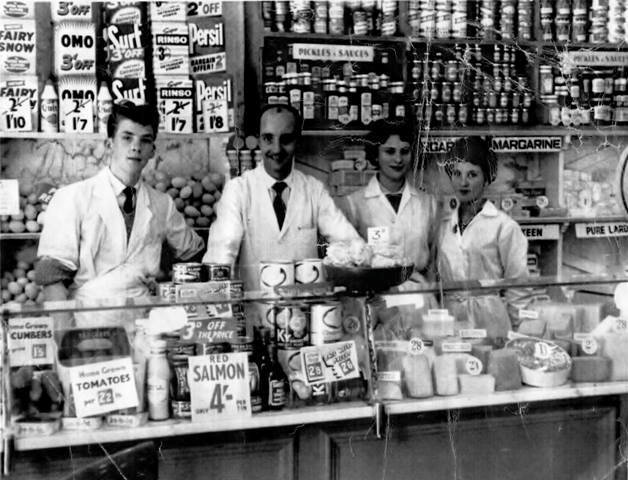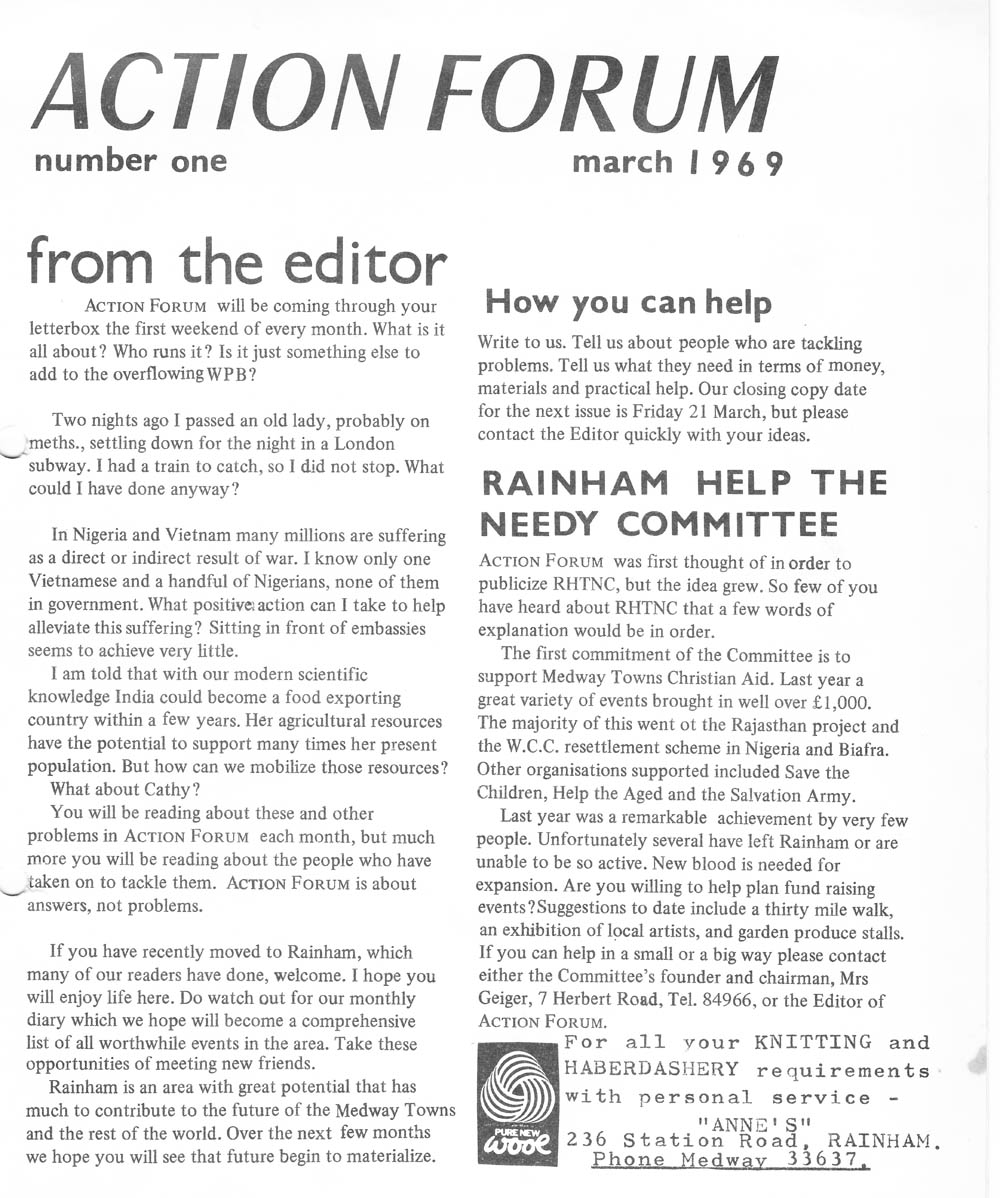My Childhood Memories of Rainham
My first recollections of Rainham are when my family moved into a house on Danson Way, when I was about 4. After a short time we moved into a house in Quinnell Street, although we moved house again we stayed in Quinnell Street where we remained until I moved out, when I got married.
I started school at St Margaret’s at the top of Station Road where I chose to sit at the front next to a little girl. I lasted about 15 minutes then I ran home again to my Mum. Needless to say I was quickly taken back. We were taught our numbers and letters using a sand tray. Mrs Madden, our teacher wrote on the blackboard and we copied in our trays, once perfect you shook the tray and started on the next one. Mrs Madden suddenly died which was a shock to us all as she was very nice. I remember Mr Turner the Headmaster, Mr Davis the Deputy Head who also ran the school football team, and of course Fanny Evans who used to shout at everyone! There was a large tree in the playground and it was alongside this that a slide used to appear whenever there was any snow or ice around. Mr Davis used to slide down it alongside all the boys. What would happen today with all the ‘health & safety’ regs!

The school itself was very old, built using a lot of flint so you had to be careful if you rubbed up against the wall too hard. At that time the only other school was in Solomons Road on the corner of with Scott Avenue. Also in Scott Avenue, there was a row of prefabs as there also were at the end of Solomon Road. Later when they started to close Eastwoods brickfield, this was between the end of Scott’s Avenue and the Lower Rainham Road, they built a new school called Wakeley Road School. They also got rid of all the allotments at the end of Scott’s Avenue. Some of my memories are the same as other people have written, so if I repeat them, please forgive me! In those days a lot of people that lived in council houses were not very well off, quite poor in fact by today’s standards! I can remember having new shoes, they were all leather and I kicked the fronts out of them playing football with a tennis ball in the playground within a few days, which didn’t go down very well at home! The same as when I went through the sole sliding around. I put paper and card inside my shoes to cover the hole so my Dad wouldn’t see it! Many a day I went to school like this. Once I remember my Dad pulling the studs out of a pair of football boots, polishing them black for me to wear to school simply because, at that moment, they couldn’t afford to buy me another pair. I was the oldest of 6 children, so clothes etc., just went down the line from one to another.
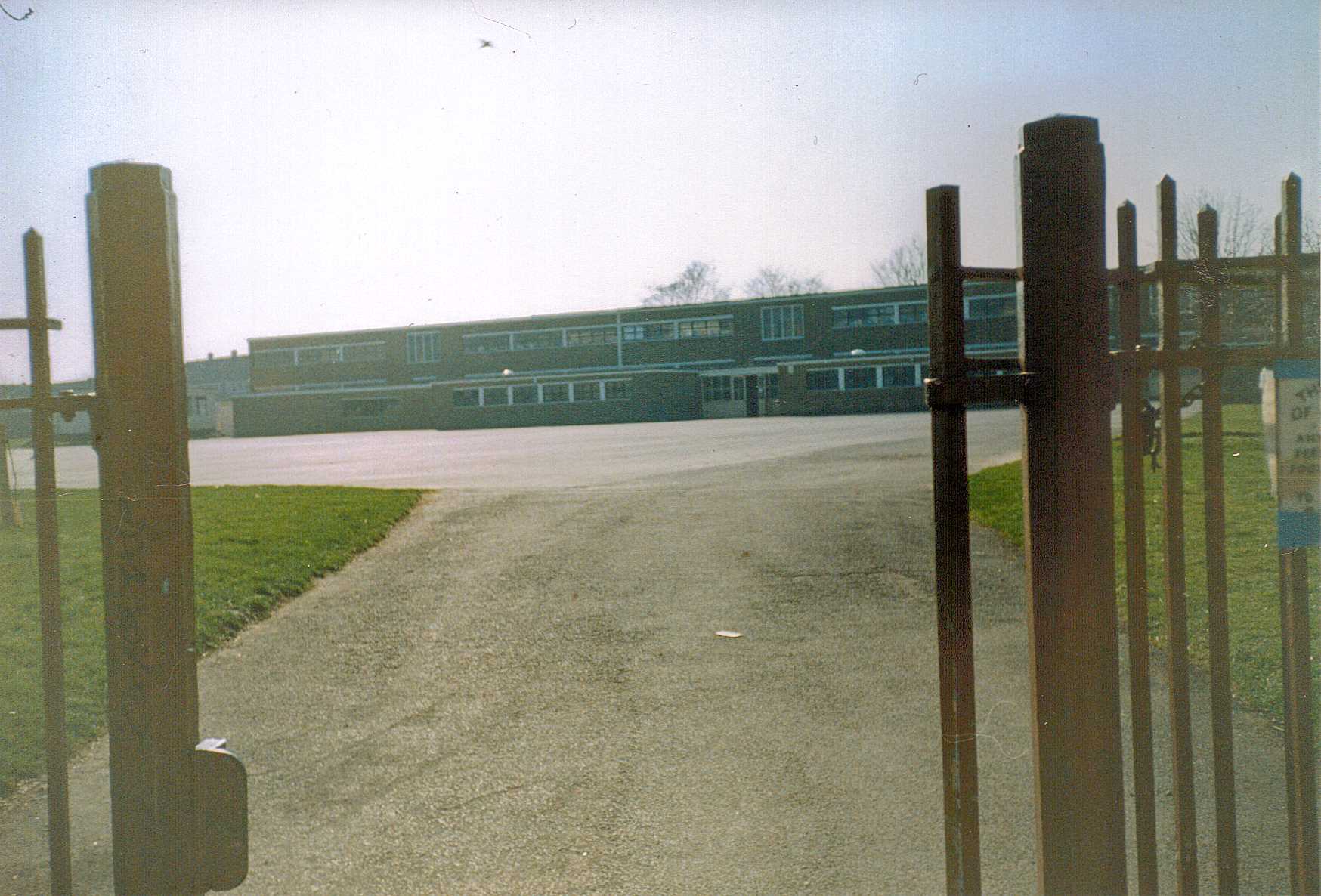
Colin McGregor who has written in this forum is younger than me, and some things changed from my time to his. Mr Osbourne lived at the top of Quinnell Street and used to own the wholesale newspaper business that supplied all local shops. All the top of Quinnell Street where Hidsons now is there used to be a nice bungalow with a large garden. Just round the corner, next to the bank, there was a wooden hut that was the Police Station that was changed for a larger building prior to the new one being built at the top of Berengrave Lane. The local policeman was a huge man who used to visit the schools giving talks and putting the fear of God into us all as to what would happen if we were to do anything wrong! Opposite the Police Station were the Gas Showrooms and a garage with a Ladies Hairdressers, a sweet shop and butchers. One thing I forgot to mention, I am sure when I first moved to Rainham, there were still trams running that turned down Station Road. This point is up for discussion.
Going on to things we used to do. I remember that Quinnell, Brown & Holding Streets as well as the 2 road triangles, all had trees planted between the footpaths and the houses, which were very useful for kids to play around. That is except for the new houses built on one side of Quinnell Street. They had front gardens, they also had, what we called, the new path which is where we used to race a barrow down. Down the path, passed Richard Matthews house, also a contributor round the corner and down the alley that led to Berengrave Lane and Hunters Shop. Look out anyone coming up with their shopping bags! Going on to Berengrave Lane there was Nellie Hunters shop on the corner of the alleyway, turn right going down, there was Longley’s Farm which now is the estate where you find Northumberland Avenue, Devon Close and Tufton Road, then the railway line and to the left of this, Rainham Cricket ground, where you found Mr Eccles the Chairman from Brown Street and of course Sid Calloway known to us all as ‘Mr Rainham Cricket Club’ – a fairly well off man, that supported the club in a big way. He also played cricket to a very late age.
Next to this was the Scout building housing the 22nd Medway Scout group then through the railway arch where you found Mr Longley’s Rose fields. Mr Longley was renowned throughout England for his process of rose growing. His rose garden on the right hand side of Berengrave Lane now is the estate incorporating Childscroft, Chalky Bank & others. All us kids used to walk down Berengrave Lane, past the chalk pit, now a nature reserve, to what we called the ‘tide’ or ‘the sea wall’, to go swimming. Most of us learnt to swim here, out at Motley Hill, in the streams as the tide came in. Some could swim well and they would show off by swimming across the dock! Opposite the dock was the old cement works where you found a building, as stated by others, as the house of many windows. On the way down Berengrave, people used to leave out on their walls, dropped apples, pears and plums for us! We also used to knock on doors for a drink of water, which they always took pity on us and gave us a drink! Nice people! During the summer we used to go down the tide to pick damsons and blackberries from which our Mum’s used to make jam. Talking of the Lower Rainham Road, I remember when we had floods! The Lower Road and the houses along it were flooded, this caused quite a sensation!
Once we reached 11 we took the 11 plus exam and of course, most of us failed, which was expected. So off to the Church of England Secondary School in Orchard Street we went. This school was half girls and half boys and never the twain shall meet! Mr Bacon, Head, Mr Thomas Assistant Head, Mr Newell, Clark, Sneath, Springate, Rotherham and Mr Richards were just some of our teachers and then, of course, to those that remember, there was ‘Bomber’ an ex naval English teacher, who delighted in giving people the slipper. All teachers ‘slippered’ in those days, but ‘Bomber’ thought he was the best! He used to say to us, if we found a better slipper than the one he was using, then bring it in! Of course, if you were the fool to do so, you were the first person he would try it on! It was all good fun and I am left with great memories of those days. Mr Springate or ‘Alfie’ was a Salvation Army Major, who taught us music, raised a lot of money for instruments for the school orchestra by arranging for pupils to collect old newspapers and magazines, storing them in the boiler room and was then sold by the ton to raise money. In those days, apart from English, Maths and Science, we were taught Metalwork, Woodwork, Gardening, Craft and so on, all the skills needed for life. The only difference was that if you were not in the ‘A’ stream, you were not taught subjects like Technical Drawing, Logarithms and so on. Only the ‘A’ stream took ‘O’ levels. If you were not ‘A’ stream, you were thick and didn’t warrant teaching subjects you didn’t understand. This I think was true, and it is a pity the same is not applied today. I will leave the Secondary School years for another time.
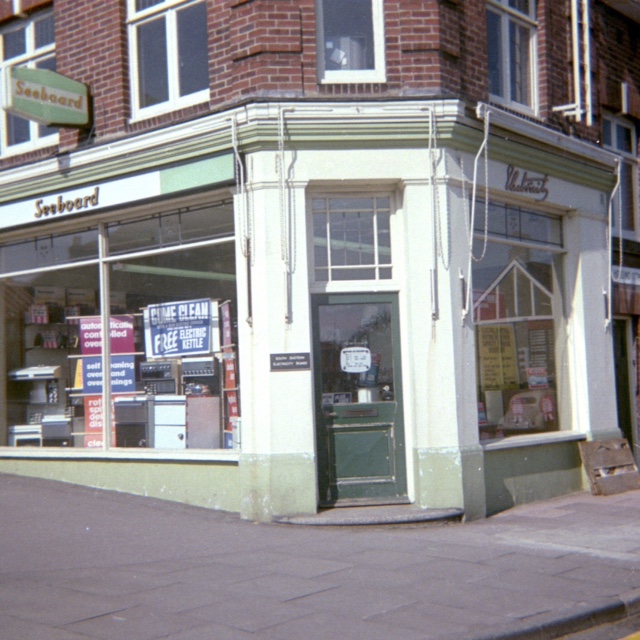
If we go back to Rainham High Street and to the shops and businesses, apart from those already mentioned, at the top we had the telephone exchange, the chemist and the electricity shop on the corner of Holding Street. On the other corner, we had the sweet shop owned by Barbara Kitchener and right outside her shop was the bus stop. Just down Holding Street on the right-hand side there was Wades lorry yard and on the other side of the road, there was the clinic where pregnant Mums and all other childhood problems were dealt with, things like Polio vaccinations etc., were administered. This is also where Nurse Legg was domiciled when she was not out visiting schools, checking us all over as well as looking in our heads for ‘nits’! Going on down the high street, next to the sweet shop, it was either a house or an accountants, Poulton’s was there, as it is now, but a lot smaller. There are a couple of others that I can’t remember; one I think was a wool shop. Then you had the farm where the shopping centre now is and next to this, I think it was called the Ford or Forge Garage, then a couple of houses and a small sweet shop, which you stepped down into, then a ladies hairdressers.
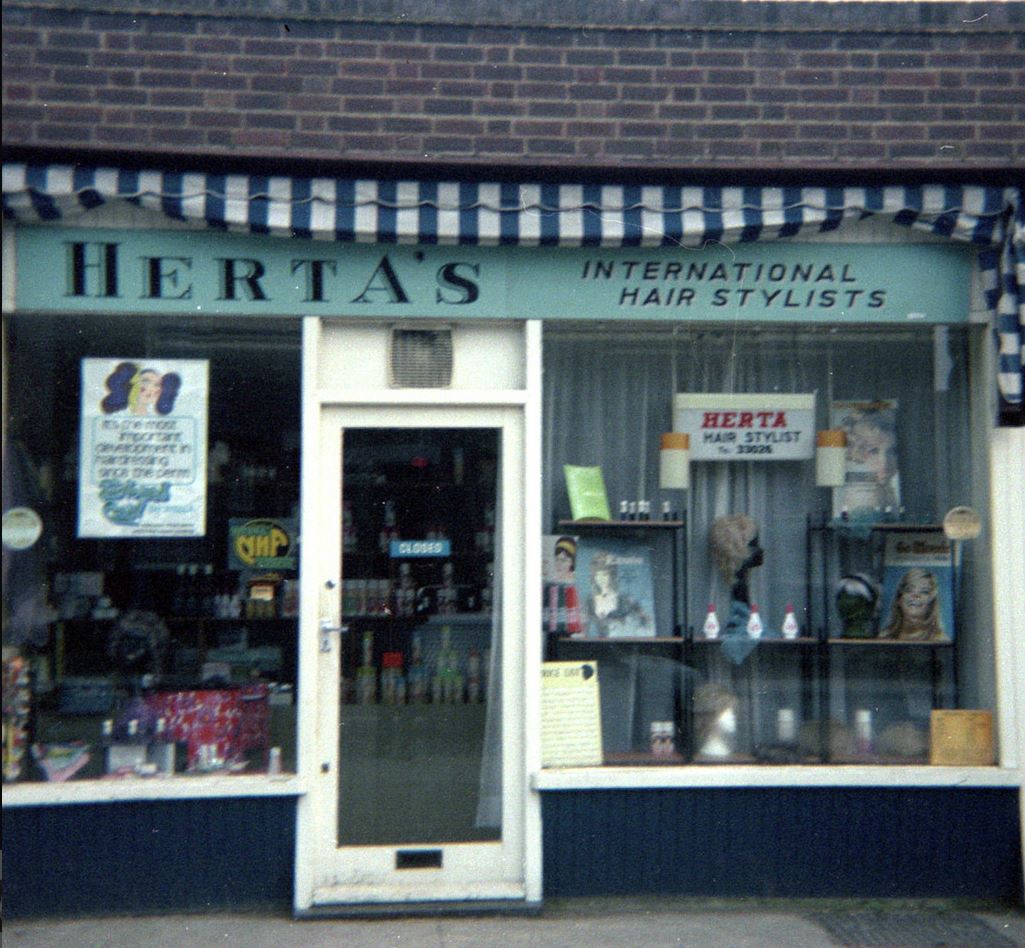
Roses the grocers, I think greengrocers, and Green’s Cycle Shop that had moved up from Station Road. Further along you had Rouses Radio Shop, Smith’s Men’s Hairdressers, two brothers, and Creamers the Bakers. Then there was an alley, which led behind Creamers to a Dentist that not many people will remember. After this came, I think, the International Stores, which later was bought and turned into the first supermarket in Rainham. I believe it was called Vies, next to this was the carpet shop and the Bank on the corner of Station Road. On the other side of the road, there was nothing other than a few houses before you got to Orchard Street, where just up about 20 yards, there was of course the Blacksmiths, he would throw a hammer at the door that we lent over to give him a bit of mouth and take the ‘micky’! It was all good natured, I might add. Going back to the high street, there was another sweet shop, then a corn merchant then of course the famous ‘Bug Hutch’ Royal Cinema with Pat the usherette who knew all the kids, their names, their ages, which was a pain when you weren’t very big, when an X rated film was showing, she wouldn’t let you in. I say famous, for we had the only picture house with double seats and obviously couples came from miles around to ‘kiss and cuddle’ with the ever present Pat keeping an eye on them all, by shining her very bright torch on them, should she think things were getting out of hand! After that there was an estate agent, where I purchased my first house and then a furniture shop.
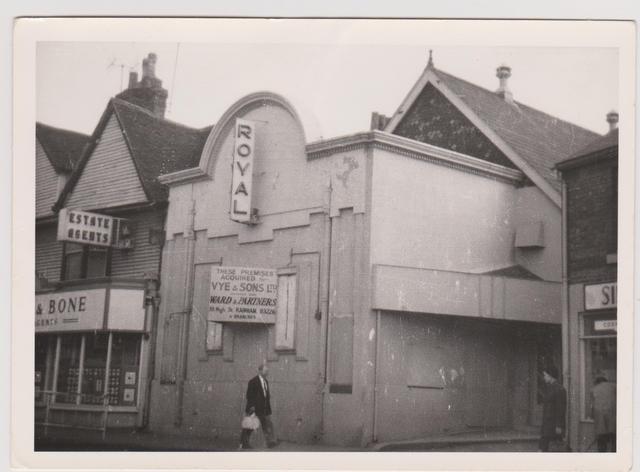
The Cricketers Pub came next, where we all, once we left school, used to meet up and this is where we all learnt to play darts. Wally and Madge were the landlord and landlady and it was Wally, that found in his cellar, the equipment ie: poles, bat, trap and balls for the game, now widely played called’ Bat and Trap’. This was in about 1962 and I believe it was Wally, having found the equipment and organising matches with other pubs that re-introduced this game back into pub life. A league was formed and off it went! A pint of mild or a brown and mild would have been around 1 shilling a pint then or 5p now.
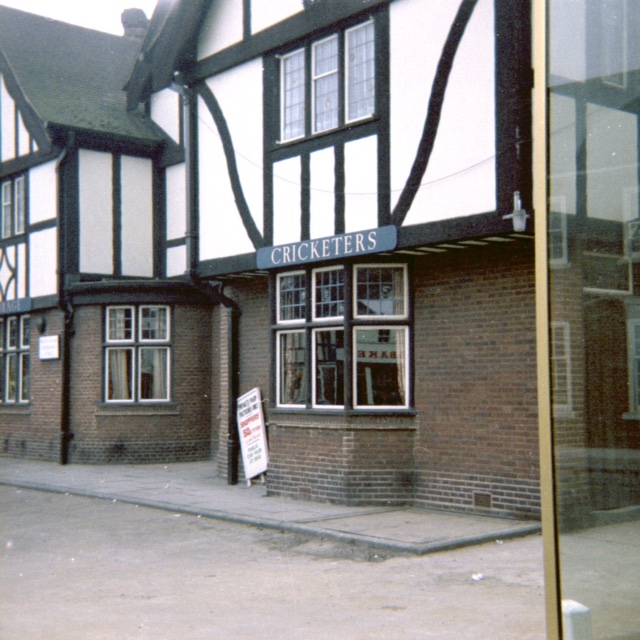
This writing and reminiscing lark could go on forever so I will just mention a couple of places younger people may not know about. Just past the church there was a bakery opposite the Coop and Barden’s greengrocers.
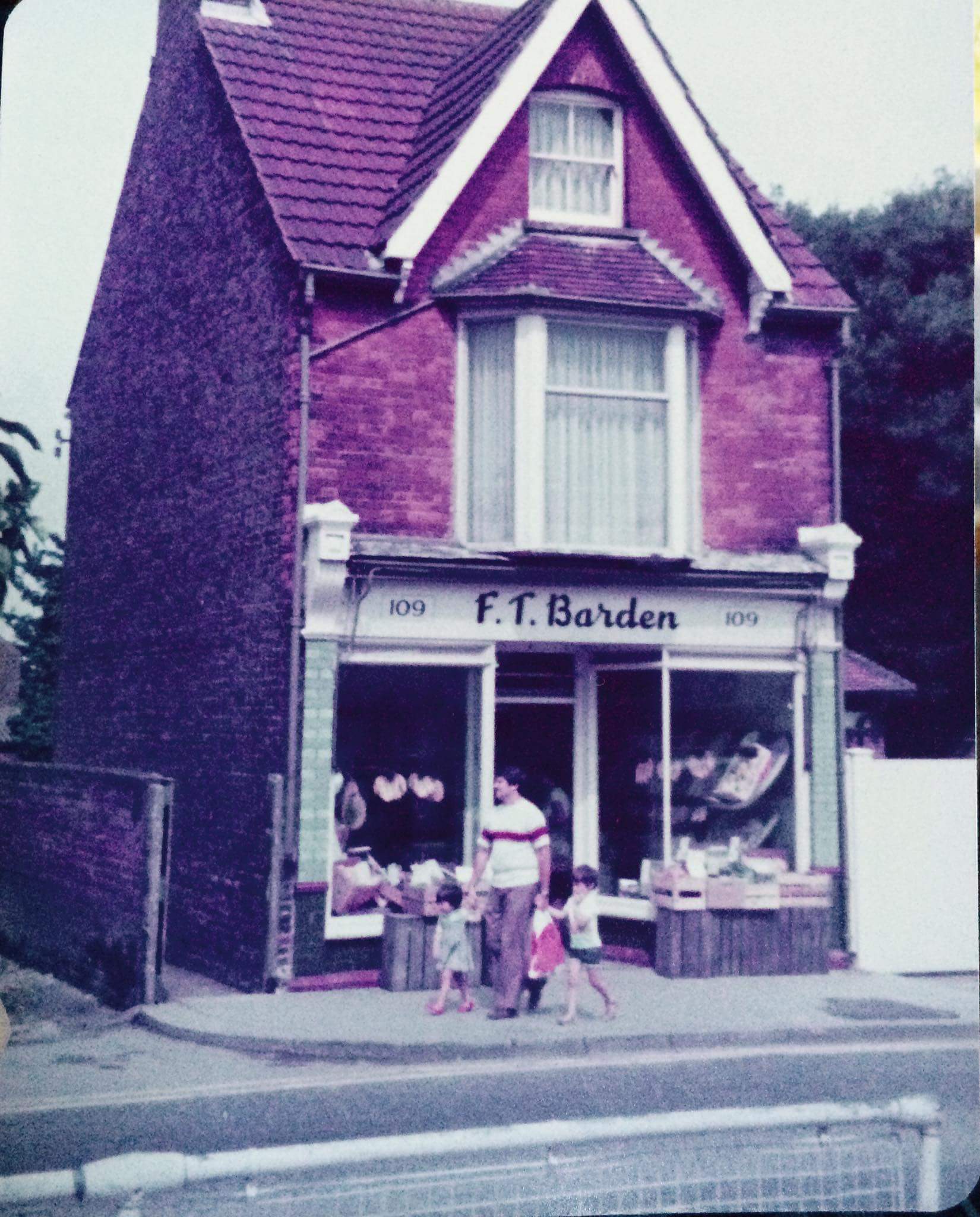
In Ivy Street an off licence called, I think, the Brown Bottle or Jug and in Station Road, apart from Rules paper shop there was another paper shop called Whirlies, next to Coates the Chemist. Talking of Frank Rule, my Dad used to give me a roll up cigarette to smoke on the way down to the paper shop each morning to start my round. All those that had paper rounds will remember that Frank was never up! We used to get to the shop about 5.45am each morning and start to ring the bell to try to get him out of bed. This usually took around 20 minutes of ringing. Occasionally, we couldn’t get him up at all. When this happened we would cut the strings holding the papers together, and mark our rounds up outside the shop and go off and do our rounds, leaving any books and weeklies due out that day until the next day. Frank appeared outwardly quite a misery but in reality he was a good and fair man. Our pay was 11 shillings a week with an extra shilling for collecting money on Saturday’s, this pay of course was for 7 days a week. The one exception was the Upchurch round. You were paid 25 shillings a week for that one. It was a long way away and quite a large round.
You had to get a Council work permit which was a blue card stating that you could work between 7 & 8 am each day, but of course no-one took any notice of these times whatsoever! I had one other Saturday job, which was going out on the greengrocery round with Mr Broughton from Quinnell Street on his horse and cart. My job was to run up and down the street knocking on the doors, then all the Mums would come out and buy their veg. On the corner of Hothfield Road there was a greengrocers shop and next to this the coal yard and opposite was a car sales. The fire station was in Webster Road, where all the kids in Rainham used to run to, as soon as the siren went off. We would chase the fire engine to see whose chimney was on fire and then wait for the firemen’s brush to come out the top of the chimney pot, having put the fire out! Then in Longley Road, at the end next to the alley that led to Suffolk Avenue there was a wood yard where we used to get our sawdust to put on our bonfire on bonfire night. One last thought, there were a few prefabs just before the railway station on the right and on the other side of the crossing, where the car park is now, used to be allotments. Also, Huggins wood yard used to be in Wakely Road, backing onto Rainham Recreation ground.
Others may remember more so would be interested to read any corrections or additions to my recollections of these times in Rainham.
Vernon Verrall
-
History Articles
